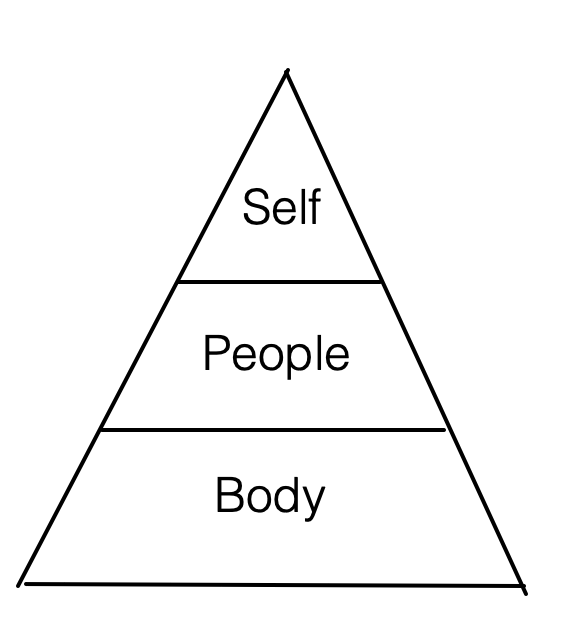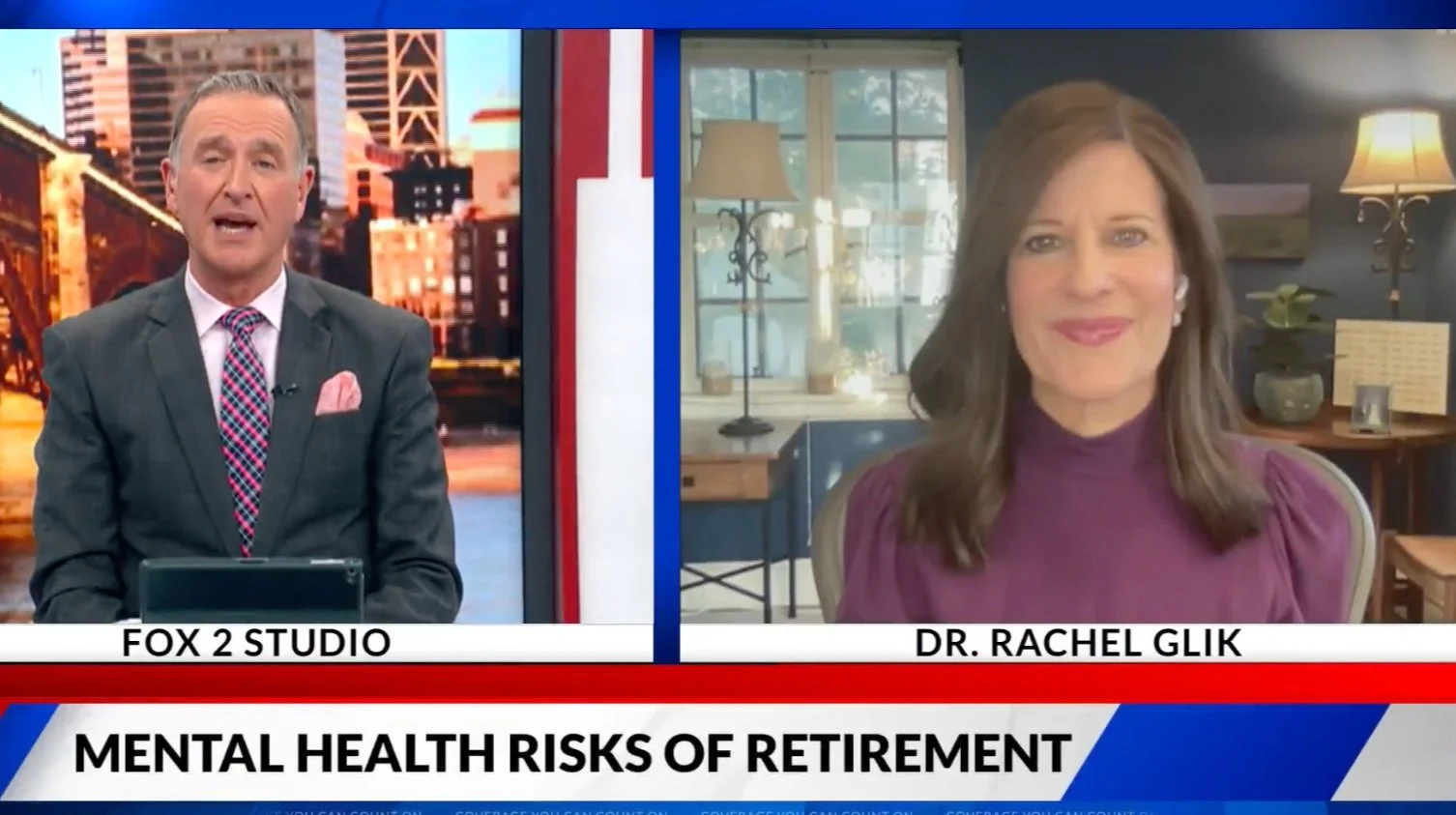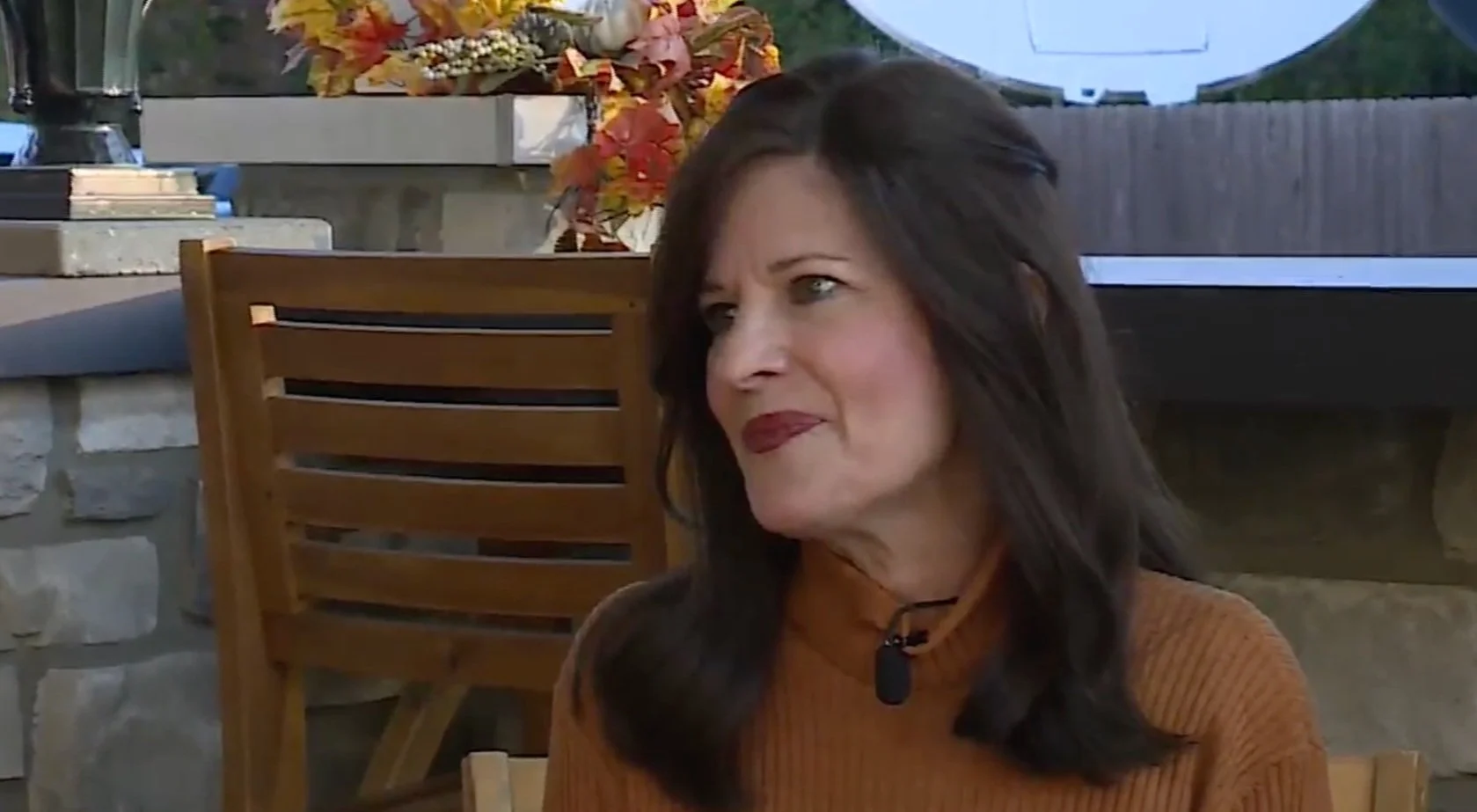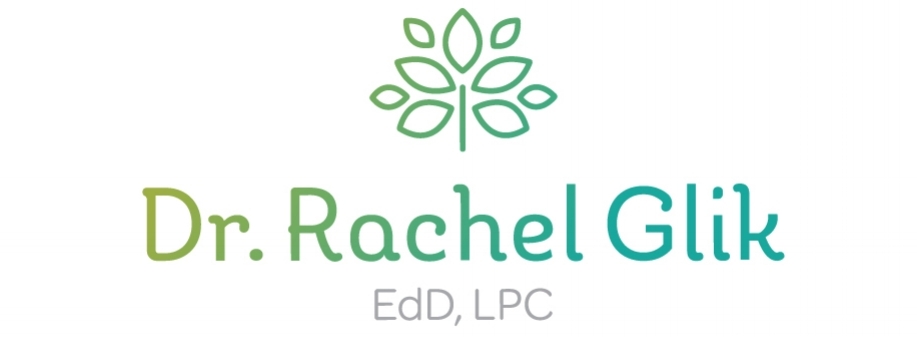As you lean into the four pillars, you and your partner create a “sanctuary” together where you and your love can grow stronger, deeper, and more joyful.
Happiness Is An Inside Job: Tips for Dealing with the Stress of Thanksgiving
Thanksgiving can be an exciting time and it can be filled with stress and emotional challenges. This is common and normal, because life itself is filled with the dark and the light. There are three main sources of stress as we approach Thanksgiving and the holidays: 1) Getting everything done (and perfectly), 2) Family dynamics, and 3) Loneliness and disappointment. Here are some tips that are good all year round to take control of the quality of your life experience, but especially handy this time of year:
Make Self-Love Your Priority
Everything good comes when we are treating ourselves with kindness and mercy. This looks to me like awakening a TRUE CARE for the quality of my life experience. It’s about my relationship with myself and my experience of being alive. “Am I having a good experience right now?”, I ask myself often. It’s my micro-meditation I use to keep me intentional about taking care of myself, from the inside out. If I’m pushing myself too hard, or doing something for the wrong reason (e.g., people pleasing or perfectionism), then questions like: Am I having fun?, Is this good for me?, Am I having a good experience right now?, slow me down, wake up my awareness to make a shift or a decision that will best serve the quality of my actual experience of being alive. The key is the care for oneself. This is not selfish but self-loving, which will extend itself out to others.
Make It Special but Keep It Simple
Just because you can doesn’t mean you should. Find as many openings to LET GO as you can. This is not easy! Especially if you like things done in a certain way, if you’re creative and you perceive others have expectations of you. Mostly it’s the expectations we put on ourselves that can keep us out of balance. Do a nice job, but look out for where you are going too far. Delegate as much as you possibly can. For example, ask others to: bring a dish (or two); oversee the clean up, come up with a game, bring flowers all ready to go. This year, I’ve created a true pot luck and am using disposable plates and utensils. Unheard of for my standards of the past. Again, I’m prioritizing the quality of my life experience and taking good care of myself.
Make Your Consciousness Stronger Than Your Feelings: Happiness Is An Inside Job
Choose what you want to take up real estate in your mind. This is key for the challenging family dynamics and/or if you’re feeling lonely, sad or disappointed during the holidays. You get to decide where you put your consciousness. Here are some recommendations (not easy but well worth the effort). Try choosing to focus on:
Radical acceptance of what is, instead of EXPECTATIONS
Slow down and embrace your present reality. Take a deep breath, relax your shoulders and just be with what is right here and right now. The moment we are truly present in is always sweet.
Opening your heart for what you are blessed with
This can mean thinking of others who are going through a hard time, awakening empathy and sense of feeling the warmth of your heart toward someone else in need. This will help you feel full inside and grateful for what you have and who you are.
What you love to do and what would be most loving towards yourself.
Know Yourself and What Makes you Feel Emotionally Regulated and Grounded
We must also realize that we are responsible for regulating our emotions and taking care of our well being. Sometimes that means going for a walk, getting good sleep, checking in with a loved one who centers you, using a mantra like, “I am worthy and at peace with myself regardless of what is happening to me or around me.” The more you can spend time at the front end with getting clear about what we are thinking and feeling, what we need to feel balanced and whole, then the better you can feel prepared and manage whatever it is you’re facing with calm and equanimity.
Come to Give Not to Take (It’s Thanks-GIVING not Thanks-GETTING)
Having a giving mindset is a best kept secret for creating your own happiness and well being. Start with opening your heart and choosing to appreciate how full your life is, the more you decide you’re coming to give, the more empowered and fulfilled you will have the potential to be. Again, we need to grow our consciousness stronger than our feelings to take control of our life experience. Our natural inclination is to seek what we can get, not search for how we can give. Try this counterintuitive wisdom that is back by both science and ancient spiritual wisdom.
Wrapping It Up
So much of the anxiety, low mood and stress we face is rooted in not taking good care of ourselves, in mind, body and soul. The good news about this is that we have way more control than we often perceive over the kind of life experience we have, especially the joy and peace we can have inside ourselves. Regardless of what is going on around you or happening to you, you can always choose to keep your heart open, be loving and caring towards yourself and others, and awaken thankfulness for your blessings. May you feel overflowing with the blessings you’ve been given and express that to others as often as you can.
It's Never Too Late to Build a Stronger Bond with Your Father: Tips for Adult Children
Work Life Balance for Women and Moms: 3 Tips to Show Up for Yourself
Achieving a work-life balance can be tricky, especially for women and moms who tend to perpetually juggle multiple responsibilities and mental/emotional loads. In honor of International Women’s Day, it’s important to talk about ways that women can feel more happy, healthy and balanced. A work-life imbalance can lead to serious consequences. Research shows the psychological and physical problems that many women suffer when they experience work-life imbalance, such as depression, frequent headaches, hypertension and obesity.
Most of us have heard the flight attendants’ instructions, “Put your oxygen mask on first before helping others.” It’s easy to say “amen” to putting self care first. We know logically that self care helps us show up better for others. In reality, this advice proves much harder to implement, especially for women. We all have great capacity to be powerful channels of good. However, we too easily forget that we are merely channels, and as such, we must maintain the vessel of that channeling––that is, our body, mind, heart and spirit.
Here are some common challenges I tend to hear from women and mothers:
I put taking care of myself last. Kids come first, then my relationship, then myself. Isn’t that what being a good woman and mother means?
I often feel guilty, especially if I do something joyful for myself.
I always have to be exceptional, good enough is never good enough.
I don't even know what I like for myself anymore; I’m so focused on everyone else.
I don’t ask for help because I feel pressure to do everything. Besides, I’ll probably do it better.
I don’t feel supported at work to manage the workload and long working hours while trying to balance my personal life.
Here are some tips to help you navigate the competing demands of showing up for others and showing up yourself.
Tip #1: Identify What Lights You Up. Finish this sentence, “Something in my life is not right unless I ______________________.’
Let this prompt help you form a list of activities and experiences in your life that you know keep you connected to your life force and your authentic values. You might not be able to keep in balance with all of your self care list, but at least find your non-negotiable habits to shoot for most of the time. Then you can add in the next tier intermittently.
For instance, for me, Something in my life is not right …
Unless I get a good night's sleep, I go for a walk outside in the morning and listen to something spiritual.
Unless I am spending time with family and friends, cooking and baking, entertaining, and being creative.
Unless I am reading, writing in my journal or poetry, or learning something new.
Unless I am traveling and connecting with my spiritual community
Tip #2: Connect With Your Inner Worth
We often overdo and put unkind pressure on ourselves trying to chase away the feeling of not being good enough. We can easily fall into the trap of believing that our worth is tied to what we produce, that is, thinking we are only a human doing versus a human being. Pause, breathe, and relax into the valuable, whole, and already amazing woman that you are, unconditionally, and treat yourself as such. In your thoughts, words, actions and interactions, come from a baseline consciousness of:
I am worthy of support.
My happiness has value in and of itself.
I am worthy of self care.
I am worthy of love.
I am worthy of balance.
I am worthy of joy and fun.
I am worthy of receiving help.
Human being, not just human doing, adds value to me and the world.
Tip #3: Get Comfortable With Asking For Help and Allocating Funds To Support You
The more we practice something uncomfortable, the more comfortable we become with it. Asking for help can feel vulnerable which we tend to run from. Make friends with vulnerability. It’s actually a source of true strength. I like to seek role models who are good at asking for help and spend their money wisely to receive support. I encourage you to invest in yourself, even if you need to adjust your family’s budget.
Make a list of who you could be turning to but are hesitant to do so. This could mean spending time with a friend who fills your cup. Maybe there’s a friend or family member who you can ask to help you with something. Some find it helpful to talk (calmly) with their partner about creating more domestic harmony. Perhaps meeting with your boss to request some adjustments to help support you would open something up for you. The self advocating alone can help you feel happy with yourself.
Take Away:
Women are growing more and more in touch with their power of choice, their power to nurture and build up, their power to create and manifest. What MUST go along with this expansion in claiming a woman’s true power is the inherent value we possess and the priority required to show up for ourselves. It’s important to realize how responsible it is to show up for yourself. We want to follow happy balanced leaders and this is what women deserve and our world needs.
Additional resources:
https://www.psychologytoday.com/us/blog/the-balanced-working-mama/202201/5-steps-becoming-well-and-balanced-mother
Work on Your Life Force to Beat the Winter Blues
During the late fall and winter months, many find it harder to feel as connected to their life force, to that visceral sense of feeling alive and connected. With the decreased sunlight, colder temperatures and more time spent indoors, it’s common for many people to feel a lull in their energy and motivation. Some feel the winter blues as a mild shift, a leaning into the decreased energy of the season, but for about 5% of the population (approximately 10 million Americans), the autumn and winter climate triggers seasonal affective disorder (SAD).
Seasonal affective disorder (SAD) shows up in similar ways as major depressive disorder, but the trigger is seasonal and goes away with the arrival of Spring. SAD impacts people differently, both in severity and nature. Here are some of the signs to look out for, ranging from the milder case of winter blues and moving further into seasonal depression:
Common Seasonal Shifts
less active than normal
feeling lethargic and fatigue, even sleepy during the day
sleep longer/hard to get going in the morning
harder to to concentrate
lack of interest
increased appetite – especially carbs
Signs of Depression
a persistent low mood
desire to isolate, less social
a loss of pleasure or interest in normal everyday activities
irritability
feelings of despair, guilt and worthlessness
low self-esteem
easy to cry
feeling stressed or anxious
lower sex drive
WHEN TO REACH OUT FOR PROFESSIONAL HELP
While it’s perfectly normal to cozy into the shifts we naturally feel during the colder, darker season, we also need to keep in mind that a slow down of energy can become a slippery slide into seasonal depression. Please don’t hesitate to reach out to a trusted mental health professional if you are noticing the above signs persisting for more than a few weeks or if they become intensified.
TOOLS TO WORK ON YOUR LIFE FORCE
Whether you’re noticing mild shifts or more intense symptoms of winter time, we all deserve to feel happy, connected, soulful and alive. Drawing inspiration from psychiatrist and author, Phil Stutz, here are some tools to work on your life force, this winter and all year long.
LIFE FORCE PYRAMID: RELATIONSHIP WITH BODY / PEOPLE / YOURSELF
The extent to which we work on our relationship with these 3 areas––BODY, PEOPLE, YOURSELF––we can step by step climb our way into well being and spiritual transformation. Let’s go over each one.
RELATIONSHIP WITH BODY
The body is the first place to start with connecting to your life force. We are talking the basics here because 85% of our well being begins to unfold when we prioritize our sleep, nutrition and movement/physical exercise. When we feel good in our body, and know that we are making choices that empower us, the rest can begin to fall into place.
Go Outside
I also like to add going outside as part of taking care of the body. Fresh air, even when it’s cold, is good for the brain, has a healing quality of its own and gives us perspective.
Find an Ally
Partner with an ally, or multiple allies, to help you keep your commitment to yourself. It’s easy to “intend” good habits but it’s another to keep them and consistently.
RELATIONSHIP WITH PEOPLE
Our inclination is to isolate when our life force energy feels low. All the more reason to plan time to spend with good friends, with those who fill you up. Don’t listen to the voice inside that wants to retreat. Yes, allow for solitude and “me-time” rejuvenation. Make sure you are investing in your relationships, even growing them closer. We feel connected to our life force when we connect with others, when we allow ourselves to open up and be vulnerable. Make dates in your calendar so you have social time built in.
Giving to Others
There’s nothing like taking the focus away from ourselves, going out of our way for someone else, to connect to and generate life force energy. It’s because we are OPENING OUR HEARTS and tapping into the force of creation itself which is the force of sharing. Again, ignore the feeling in your body that doesn't’ feel like moving, that only wants to take energy. Putting in the effort will have quantum paybacks in the energy you feel inside, your body and mind.
RELATIONSHIP WITH YOURSELF
This is one of my most favorite topics, your relationship with yourself. We need to fill up from the inside out and most people don’t appreciate that we with ourselves is a real relationship. There are many ways to connect with yourself, but here are a few suggestions:
Write
We want to get to know what is in our subconscious, what lies beneath the surface of our day to day thoughts. Writing can help us connect within, to discover and release our fears and insecurities, our thoughts and feelings. We can also tap into our passions, and what our soul knows to be true, by allowing space to express what our subconscious has to say.
Consume What Inspires You
We are what we consume. We have heard this about the food we eat, but it’s also true about the information, images, wisdom, thoughts and ideas that we allow to enter into our consciousness. I know for me that if I am not studying the spiritual wisdom of Kabbalah, regularly, my consciousness falls lower and so does my energy level. We aren’t meant to feel the ultimate excitement for life at all times. Yet it’s important to explore and commit to ideas, books, podcasts, documentaries, even movies and shows, that inspire you, that awaken your desire and appreciation for your life.
Be Creative
Creativity comes in all shapes and sizes and in many unexpected corners and chambers. Creativity is essentially the experience of coming up with something new and innovative. When we tap into the creative flow, we are directly connecting to the life force within us. Creativity can be found in endless possible places like: cooking, making a slideshow, puzzling, drawing, dancing, designing a space, creating a class, writing a blog, flowers in a vase, writing a business plan, planning a party, Improv comedy, brewing craft beer, planning a trip, writing a card, and on and on.
TAKE AWAY
The most important idea to keep in mind is that you are worth it! You are worth the constant effort to choose that which will connect you to your life force. When you feel disconnected, it’s like being in a maze and you don’t really see your way out. All it takes is one simple step at a time and you will start to see and feel more clearly, more ALIVE!
The Stress of Family Gatherings: 5 Tips for Calm and Balance During the Holidays
Empty Nesting: The Upsides, Downsides and Tips for a Fresh Chapter Mindset
I’ve come to understand empty nest as a verb, “empty nesting” I like to call it. The letting go process is fundamental to parenting and continuous. Some empty nest experiences create such emotional turmoil and sadness that parents face empty nest syndrome. Each person needs to find where they want to direct that new energy but I think the first step is to frame this stage of life with a FRESH CHAPTER MINDSET.
Buffering the Negative Impact of Social Media Use, Especially for Teens
Our experience is defined by what we choose to pay attention to.
Social Media has had an unmistakable impact on how so many people experience their lives. While bringing in some benefits, like offering a network of support for like-minded and marginalized folks, the negative consequences of social media use are plenty and mounting, especially when it comes to the mental well being of teens.
Our brain development is especially sensitive between ages 10-19 which is also a time when risky behaviors, addictive patterns and depression can emerge. The intent of social media is to hook our brains, to make us addicted to the dopamine of instant gratification. Teens are especially susceptible to this addictiveness, even more so for those with ADHD tendencies. During adolescence, when identities and sense of self-worth are forming, brain development is most vulnerable to body dysmorphia, peer pressures and opinions, and peer comparison.
The U.S. Surgeon General has issued a new report on social media and youth mental health. This report acknowledges some of the benefits of young people using social media, but mostly, it highlights the “profound risk of harm to the mental health and well-being of children and adolescents.” These harmful effects become part and parcel to the foundation these young people are creating for the rest of their lives.
Some important findings:
Prevalence: Up to 95% of youth ages 13–17 report using social media with more than a third saying they use it "almost constantly.” 13 is commonly the required minimum age used by social media platforms in the U.S., yet nearly 40% of children ages 8–12 use social media.
Variables: The length of time, the type of content, the interactions with other users, the disruption of other healthy habits and activities––these are all factors that determine how social media impacts youth.
Connection and Social Support: LGBTQ youths find support, connection with peers and help with their identity through social media. Adolescents in the broader population find support as well and 80% say it helps them to feel more connected to their friends’ lives.
Mental Health: Data has consistently shown that social media can harm the mental health of youth. Comparing causes most of the harm as youth on social media perceive others as looking better, having nicer lives, more friends and more fun causes most of the harm. The risk of depression and anxiety doubled among the 7,000 12-15 year olds in a longitudinal study. Reducing social media time has also been shown to significantly improve depressive symptoms. Increased time on social media was also found as a predictor of poor body image, online harassment, poor sleep and low self esteem in a study of more than 14,000 14-year-olds. Girls were more impacted than boys.
Harmful Content: Social media has been found to expose and normalize self harm behaviors, exacerbate body image issues and eating disorders, and increase depression among youth from cyberbullying.
Addictive/Compulsive Behaviors: Evidence suggests that social media can become compulsive. Excessive use, like substance abuse and gambling addiction, can lead to changes in the brain structure. The poor sleep quality and reduced sleep commonly associated with high social media use leave youth vulnerable to depressive symptoms, altered neurological development and suicidal thoughts and behaviors.
A Way Forward: What Parents and Caregivers Can Do
1.Create a Family Media Plan (out of care not punishment)
Getting input from your teen, together come up with an agreed-upon plan to create tech-free times and zones. Many keep family mealtimes and in person gatherings device-free. Pick an accountability-buddy in your family to help support keeping certain promises to yourself. For example, my husband and I made a promise to each other to wait at least 15 minutes before opening our phones every morning. Keep in mind that restricting screen time at least 1 hour before bedtime and through the night has been shown to make a difference on sleep quantity and quality.
Don’t be afraid to set boundaries. Be sure to make social media restrictions NOT as a punishment or reward for good or bad behavior. Come from love and care, blended with compassion for how hard this is.
2. Practice What You Preach
We need to start with ourselves. Healthy habits are contagious. Check your own frequency and addiction to social media. How are you nurturing your relationships and your hobbies. Parents can make a huge difference by setting a good example of what responsible and healthy social media use looks like by 1) limiting your own use 2) being mindful of when and how you share information or content about their child 3) modeling respectful behavior on your social media accounts and 4) engaging in the myriad of simple pleasures that life offers.
3. Teach Your Kids
a) About Technology and the Brain
Discuss with your children the benefits and risks of social media. Expose them to this report from the U.S. Surgeon General and to what we know about the harm social media usage has been shown to have on their younger brain as it is developing, their mental well being, sense of self worth and to their mental well being.
b) The difference between Mindful and Mindless, Distraction and Fun
Model the value of being alone with your thoughts, of boredom, of being mindful in the present moment. These are all a springboard for creativity, of real connection, of viscerally enjoying your life experience. Real fun comes from playfulness, connection and flow. SCROLLING IS FAKE FUN!
c) To Connect their Own Dots for How Social Media Makes Them Feel
Encourage your children to be internally curious. Ask them, without judgment, how they feel about themselves and their lives when they are scrolling versus other activities and ways of connecting with people. Help them connect the dots for themselves. Maybe they love music or field hockey, being outside or working with their hands. Suggest that they ask themselves, “What do I really enjoy?” “When do I know I’m in the flow, connecting with others or myself? “When am I really playful?”
Take Away:
Balance is the key and with the dopamine nation we live in, we all need help and boundaries. Especially our teens, so they can receive the benefits and be protected from the perils of the online world.
Both Parents Face Risk of Postpartum Depression: 5 Steps To Mental Well Being For All
Both parents can face perinatal depression, not just the one who gave birth. Allow yourself to love and care for yourself. You are worth it and there is nothing better for your baby. Here are 5 steps to guide you to mental well being and happiness. Not just if you’re severely depressed–These steps for mind body and spirit are preventative and relevant even if you are mildly depressed or anxious.
The Four Pillars For Long-Lasting Love
After three decades of counseling struggling couples, and after experiencing transformation within my own marriage, I've been able to identify the core components of a lasting and fulfilling relationship. I'd like to introduce you to what I have found unshakeable over time, what I call The Four Pillars.
Choose a New Year’s Theme Versus a Resolution
The 3 Major Sources of Thanksgiving Stress: Self Care Tools for Each One
The Parent-Adult Child Dynamic: Sources of Tension and Healing the Distance
Discontent between parents and their adult children has been around for centuries. In today’s times, however, the pursuit of personal growth and happiness among millennials is empowering the breaking of cycles and setting of new boundaries. The younger generations don’t want to follow the status quo and the older generations don’t understand why their children don’t appreciate and respect their elders' ways, contributions and rights.
Why Adult ADHD Is Rising: 4 Tools To Embrace The Gifts ofYour ADHD Brain
So many adult clients I meet with have no idea that their ADHD brain is impacting the way they think, behave and feel––and how they show up in their relationships. I have a keen eye for picking up on the signs.The first step of making the most of your own neurology is to understand it. Learn about yourself and the way ADHD shows up in your life — the challenges and the impressive gifts!
The Four Pillars For Long Lasting Love: Article in Mind Body Green
Click to read the full article I wrote for Mind Body Green on The Four Pillars for Long Lasting Love.
Here is recap of what I call The Four Pillars. I believe wholeheartedly in their power to create love that lasts and grows. Enjoy the full article here.
Pillar 1 is Responsibility: We are each responsible for our happiness and well being.
Pillar 2 is Growth: We use our friction to help us grow, individually and together.
Pillar 3 is Priority: We make our partner the most important other person in our lives.
Pillar 4 is Generosity: We use our relationship to be a force of sharing in the world.
Families Making Up After Pandemic Fights
Some families grew closer over the pandemic while others suffered rifts. Differing views on vaccines, masks and testing has made for some tricky family dynamics and sometimes hostile conversations. Without the pandemic as an excuse anymore for keeping distant, the pressure is on to address these emotional issues. Here are some steps for repairing your relationships and moving forward.
Mental Health Risks of Retirement: Tips for Thriving Not Declining
There is a curious and common paradox about retirement. Those who retire into a life of ease often find themselves declining in their physical health and mobility, and often face feelings of loss, depression and anxiety. So what is the solution here? How do we approach this stage of life, actually feeling more alive and well, not less so? How do we thrive in our retirement?
Dry January and the "Sober Curious" Movement
Dry January and Sobriety are growing in numbers particularly for the millennials and gen Zers. If you’re considering making some changes to your substance use, whether that be for the sake of a healthier, more mindful, fulfilling life–or if it’s a matter of life and death–here are some suggestions to help keep you safe and successful on your “Sober Curious” journey.
Harmonious Ways to Handle Vaccine Debates for the Holidays
Relationship Tips for Empty Nesters
We continue to evolve and grow as people along the parenting journey and most couples grossly underestimate the need to continually invest in their togetherness, to address their differences and areas needing repair. So how can couples build a strong empty nest for themselves, whether the kids have flown the coop or are preparing to do so?

















